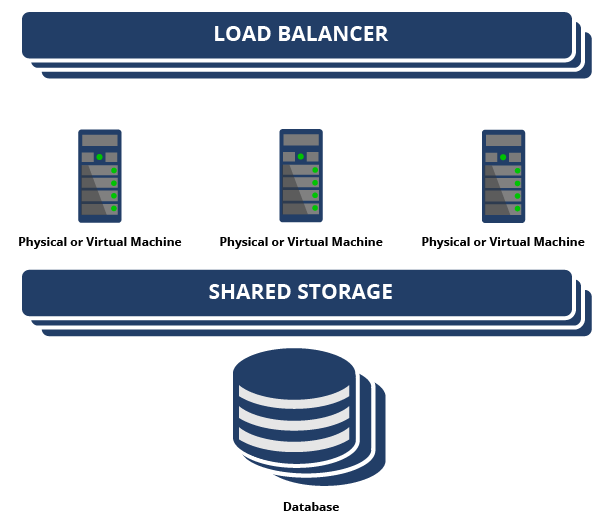Architecting a high availability system
The Pega Platform supports production service level agreements and emphasizes redundancy as a best practice for physical and software-based highly available production architectures.
In the following diagram, redundancy is applied to the infrastructure across all tiers of the hardware and deployment architecture of Pega Platform servers, represented by the shadowed icons. For example, one implementation can have several load balancers, physical and virtual machines, shared storage repositories, and databases. These principles are general to three-tier architectures and are applicable to private hosting or cloud environments.

Architecting a high availability system involves setting up the components of the highly available system and then defining highly available integration services.
- Setting up the components of highly available environments
Creating a highly available system typically requires coordination across multiple groups in an organization. Individuals or groups responsible for deploying highly available systems must collectively understand and agree on how to configure the Pega Platform for their organization.
- Defining highly available integration services
Deployments of Pega Platform integration services that are part of highly available production environments require additional configuration that might not be necessary in development.
Previous topic Configuring nodes for high availability Next topic Setting up the components of highly available environments
